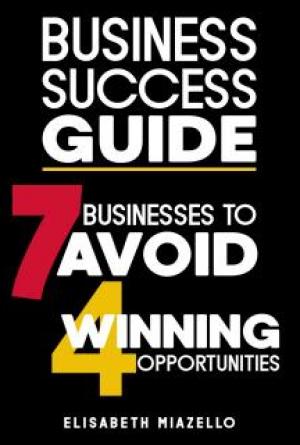Content: What would I write about? In person, I talk about business, communications,
technology, family, stress, startups, etc., but on my blog it had to be perfect. I thought I only
had 3-4 things that may be interesting to write about. So, on the Red Line back to Alewife, I put
those initial 4 topics in my iPhone notes, and asked what else I might want to talk about. I
ended up with 85 topics over the 20 minute ride home. So content wasn’t the problem.
Time: I’ve never considered myself to be a free-flowing creative writer. I am an especially good
editor and shaper of ideas though. To me, the writing process included flashbacks to 3AM
banging away on an old Smith Corona typewriter back when I first started college. I didn’t want
to have that burden messing with my work or time. In reality it was just a conscious decision on
how best to use my time. I was really questioning my writing skills. I recently switched my
bloated e-mail .pst file to my laptop and noted over 5,000 sent e-mails were in there. So my
writing skills or time wasn’t the problem.
Perfectionism: There are a lot of really good looking blogs out there. How would I compete?
But what am I competing in? Why was I blogging to begin with? Yes, I do want this blog to let
people know about me and how to work with me, but I also wanted to have an outlet to share
what I learn from working with clients, being a dad, a husband, a friend, etc. Since none of
those blogs were about how I can relate to the business community around me, I wasn’t real y
competing with them. I just needed to create the blog to add a third dimension to the
Copyright © 2012 B2B CFO® 42
The Ultimate Small Business Playbook
@BostonCFO people can get to know on Twitter and other local events. I was already being
that person, and it was far from “perfect”. Hmm…perfectionism wasn’t the problem.
Just Get Started: In the end this blog had been sitting in pieces in my head and my computer.
I’d throw it out in conversations every once in a while, but that didn’t ever go anywhere. In the
Army, I remember being stuck in the air about 25′ on a confidence course. I had climbed a
ladder to get up there and now needed to walk 15 feet across wooden beams that were about
18″ away from each other. I couldn’t move. That first step was nowhere to be found. A dril
sergeant climbed up to ask what my problem was. He said he remembered being stuck on that
very obstacle course 5 years earlier with another recruit. He said once he took the first step, he
was actually able to walk around up there pretty easily (as he was demonstrating), while the
other recruit never did take the step and got sent home. He stood beside me to show me how
that first step worked. I took that step, and found I too could walk around up there with ease.
And I felt pretty silly for taking so long. I felt the same way today after I finally launched my
blog.
Four weeks after my obstacle course epiphany, I was at the Army Parachute School at Ft.
Benning, GA standing in the door of a C-130 aircraft about 1/4 mile in the air completely
terrified, but yet I took that step and never looked back.
Articles By Brian Christian
Observations from a Part Time CFO for
Hire in Oconomowoc, WI
In working with my clients, I have solved several common issues with which they previously
struggled. All of them are critically vital to profitable growth and sustainability. The good news
is that with focus and accurate analysis they can be rectified. In no particular order, here are
five that I see most often:
1. Lack of Timely, Accurate and Meaningful Financial Statements. All business decisions have
financial implications. Without basic financial information, it may be a shot in the dark. Many
times the financial statements are too old (not timely), the business owner doesn’t believe they
contain correct information (not accurate) or the financial statements support the preparation
of the company’s income tax return, and not necessarily the successful running of the business
(not operational y meaningful). They usual y only become important when the business owner
needs to meet with the bank.
Copyright © 2012 B2B CFO® 43
The Ultimate Small Business Playbook
2. Lack of Cash Management tools and expertise. As we all know from operating a business,
cash is king! It is the common denominator for all businesses, NO CASH = NO BUSINESS. Other
than the current cash balance (most of the time determined by looking at the bank’s balance)
most small businesses don’t manage their cash. Cash management includes understanding your
business’ “operating cycle” (i.e. cash to cash cycle). To improve your “operating cycle” it is
imperative you understand what it means, how to calculate it, and what influences it before
you can improve it.
3. Poor Pricing Management. Setting the appropriate price of your products or services will
drive revenues and just as importantly the “gross margin” for the business. Do you have an
accurate assessment of the fixed and variable costs of producing your product? Can you
accurately assess your profitability by sales region, customer, product line or service?
4. Lack of Systems & Processes. Processes, whether documented or not, exist in all businesses.
It is the way you perform the work necessary to produce your products or services. In most
small businesses, the underlying processes to accomplish the work are rarely documented or
reviewed as a whole (i.e. system). Developing efficient and effective systems and processes
general y reduce costs and/or improve productivity.
5. Too Much Minding and Grinding and Not Enough Finding.
Jerry Mills, founder and CEO of B2B CFO®, developed a simple organizational model for small
businesses. He identified the three roles he found in closely held businesses as Finders, Minders
and Grinders. Grinders represent the employees whose focus is about today. Minders live in the
past; their work is in the administrative, accounting, customer service or warranty departments.
True Finders live in the future. They are the visionaries, innovators, and relationship builders.
They provide the passion and the drive for the business to grow and succeed and pull the entire
company into the future with them.
Have You “Hired” the Right Bank?
Recently I was visiting with a very good commercial lending officer. We were discussing the
current economic climate and the trends we both have witnessed lately with respect to
commercial and Industrial (C&I) lending.
He made an off-hand comment that I probably did not adequately appreciate at the time, but
upon reflection it hit me like a brick!
He said: “I wish potential clients would perform a little due diligence, or at least a half hearted
attempt to find out if we are a good fit for their company.” He went on: “The deepest questions
I get are:
Copyright © 2012 B2B CFO® 44
The Ultimate Small Business Playbook
• “How much will you lend me?’ and,
• What wil it cost me?”
Upon further thought, I had the fol owing considerations:
A typical bookkeeper, office manager, accountant or controller will usually cost a company
between $25,000 and $90,000 annual y (plus taxes and benefits).
When hiring for these positions, business owners/CEOs and their managers will typically go
through many, if not al , of the fol owing steps in search of the “best fit” for their company:
1. Create a detailed job description.
2. Write and place a classified advertisement in a newspaper or post the position on an
internet job board.
3. Spend hours sifting through resumes or job applications
4. Spend hours interviewing qualified candidates in multiple rounds of interviews.
5. Spend hours negotiating with multiple candidates.
The above are pretty routine, common place and acceptable steps that businesses take to
ensure they hire the most qualified person and maintain their desired culture.
What isn’t routine and common place are similar considerations given to what kind of
institution they will borrow money from. Considering that the interest incurred on a term loan
or line of credit ranging in size of between $500,000 and $1,500,000 will fall roughly into the
above annual expense range and last for several years, isn’t it appropriate for the business
owners/CEOs and their managers to take more steps to determine if they are “hiring” the right
lending institution?
It is entirely appropriate for a business owner/CEO to do some self-examination first. A good
start is to ask some or all of the following questions:
• What do I want out of my bank besides money?
• Can my internal controls be enhanced with cash management tools? such as:
Positive pay.
• Dual controls over electronic funds transfers and check signing.
Investment sweeps of idle funds.
• Automated advances from and principal payments to our line of credit.
• How much time am I wil ing to spend educating a bank about my business?
Copyright © 2012 B2B CFO® 45
The Ultimate Small Business Playbook
• What am I financing today (in terms of assets) and how do I expect that to change over
the foreseeable future?
• What kind of growth can I reasonably sustain and how much growth am I comfortable
with?
• From an outside perspective, what would someone (a banker) perceive as operational
risks?
Almost without fail, I find that bankers are comforted to know that a business owner/CEO has
gone through something resembling the above exercise, because it leads to a healthy
discussion of the business and the bank’s ability to meet its needs. Below is good example:
• What kinds of cash management programs do you offer and how might they benefit my
company and strengthen our internal controls over cash?
• What do I have to provide you with so that you are comfortable with, and confident in,
our ability to profitably run our business?
• Currently today, we have a term loan on some of our equipment, and a line of credit
that finances our accounts receivable and inventory.
• We currently lease our building, but have the right of first refusal to purchase it. Can
your bank finance all of this for us or will this be a problem in the future?
• We have historically seen top line revenue growth of 10-15% annual y with spikes of up
to 20%. Does this present a financing issue for you over the next few years?
• We operate a fleet of trucks that transport petroleum products. As such there is some
risk of environmental contamination both on and off-site. We do have internal policies
and procedures vetted by our insurance underwriters that mitigate most of it. Do you
see this as an issue in obtaining financing through your institution?
Articles By Bruce Peterka
Top 10 Reasons to Plan Your Business Exit in 2011
Long hard hours are what built your business and long hard hours have kept it running. How
many more years of your life are you wil ing to invest in your business? Wouldn’t you prefer to
Copyright © 2012 B2B CFO® 46
The Ultimate Small Business Playbook
reap the rewards of that hard work instead? Let’s start with a brief but to the point list of 10
reasons to plan your business exit this year.
1. Like it or not, you are one year older.
2. This recession was either a shot across the bow or it may have hit the boat.
3. The next upswing may be the last one you’l see before you are in your 70′s.
4. More than ever, your kids probably don’t want the business.
5. Recessions make us realize how much is at risk.
6. Building it back up is a long road, make sure you know how it ends.
7. Banks are back, maybe not forever.
8. Capital gains tax rates are frozen for 2 more years…you can assume they wil run with
taxes, going up?
9. Life plans have advanced.
10. Resolve to let business chal enges be the other guy’s problem.
Becoming mental y prepared to exit your business may be harder than you’d expect but starting
the process is easy and comforting. Exiting a business that has been built by years of hard work
and dedication can be a difficult emotional hurdle. How involved are you in the day to day
operations of your business? What will you do with your time when you are no longer running
the business? Make a resolution to get prepared for the next stage of your life – this will allow
you to think clearly throughout the exit process so that the decisions you make are based on
objective criteria instead of the subjective way in which you feel about the exit.
The Family Trap, 5 Pitfalls to Wealth Transfer
Is the transfer of you Family Company going to survive?
Amongst the millions of privately-held businesses in the United States, a large percentage is
‘family’ businesses. This means that there is more than one generation of a family working in
the business. As you, the exiting owner, begin to consider how you and the company wil live
without the business as it transitions to your children, there are a few key areas where you
should focus your attention. This newsletter lists five (5) pitfal s that you should avoid when
planning your family business succession.
It is helpful to begin with a few statistics il ustrating how often family businesses are trapped
within these pitfal s. Namely, less than one-third of family-owned businesses survive the
transition from the first generation of ownership to the second – and only 13 percent of family
businesses remain in the family over 60 years.
Copyright © 2012 B2B CFO® 47
The Ultimate Small Business Playbook
Why such chal enging longevity statistics? It could be in part to the added chal enges that come
with running a family owned business or, quite possibly, the many hurdles that can come with
succession of that business. Given the importance of the business to the families involved –
including your family members, the employees, the management team and your community, it
is worthwhile to review this list of pitfalls and incorporate these ideas and plans for greater
success in your overall exit planning. The five (5) pitfalls are as follows:
1. Transferring when the parents are not financial y ready
2. Transferring before the parents are mentally ready
3. Transferring to children who do not know how to run a business
4. Not taking advantage of gifting opportunities
5. Failing to Document the Terms of the Agreement in Writing
Concluding Thoughts
These five (5) pitfal s should be addressed and avoided when building a plan for your exit and
your family business transition. Careful planning can lead to more successful outcomes when
you navigate these pitfal s and continual y build, update and refine the plans for your family
business succession.
Articles By Charles Sonneborn
How to get cash out of your business
How to Get Cash WITHOUT Going to the Bank a/k/a Managing Accounts Receivable
Every business needs cash in order to be successful. When times are good, cash (along with
many other important metrics) can be forgotten and overlooked. When times are bad, the
individual entrepreneur, small business as well as Fortune 100 Companies (yes, even the auto
industry) are in critical need of it. The first thought of smal and emerging businesses is to rush
to their bank and utilize existing lines of credit or request increases. Unfortunately, this is
usually the worst time to approach your banker. Many business owners overlook a valuable
asset that can generate some very positive cash flow when managed properly. That asset is
their ACCOUNTS RECEIVABLE! The management of Accounts Receivable is often neglected until
the business is in desperate times. A good A/R program must be instituted when the business
first begins to generate Receivables. The components that need to be developed and
maintained are:
Copyright © 2012 B2B CFO® 48
The Ultimate Small Business Playbook
1. Establish written credit policies and procedures that not only establish your expected days
for col ection, but detail what actions need to be taken when a customer fal s outside these
parameters (i.e. Customer goes over credit limit, Customer exceeds payment terms, Customer
bounces a check, significant change in Customer’s credit report, etc.).
2. Identify someone in the organization (i.e. Credit Manager) who wil be responsible and have
accountability for making credit and collection decisions and take subsequent actions for
proper and timely notifications to delinquent customers. This person should NOT be someone
in the company who also has Sales responsibilities. This would be a conflict of interest.
3. Be sure there is adequate computer software to accurately track the Receivables and print
meaningful Aging reports. These reports must be run regularly (typically monthly or even
weekly depending on the business cycle). The Credit Manager should note, on the reports, al
actions taken for past due accounts. It is also advisable for the Owner or applicable Executive to
have regular meetings with the Credit Manager and review the status of open accounts.
4. Have all customers, prior to being sold/serviced, complete a Credit Application that will be
reviewed and approved by the person who has accountability for Receivables. This document
could become invaluable if legal proceedings need to be taken and provides accuracy in initially
establishing the customer’s name, address, etc. The document should also require a personal
guarantee from the Customer’s owner. This form should be reviewed by an attorney prior to
putting it in use. If your attorney advises it is ok to ask for the owner’s mother’s name, address
and phone number as it can be very helpful in your col ection activities if needed.
5. Subscribe to a credit reporting service (such as Dunn & Bradstreet) so you can obtain
pertinent information about your customers prior to shipping/servicing. A copy of the report
should be filed along with the Credit Application. Periodic updates to these reports should also
be run and reviewed by the Credit Manager. The frequency of these reviews should be included
in the Policy/Procedure Manual described above.
.
6. Al accounting personnel responsible for bil ing must understand that every invoice needs to
be generated and mailed in a timely fashion with the invoice date being the date product was
sold or services delivered. It is also a good idea for the expected due date to be printed on the
invoice so there are no misunderstandings by the Customer. A delay in the bil ing function gives
the Customer an excuse to pay late. It wil also produce an inaccurate Aging report, thereby
providing erroneous information to the Credit Mgr and in many cases, the bank.
7. Print and mail a Statement to each Customer periodically. This will allow the Customer to see
how much is owed and how many days outstanding the account is. It will also help to protect
the integrity of your Receivables in that the Customer wil contact you if they feel the balances
are incorrect. This is an important function in developing internal controls for your business.
Copyright © 2012 B2B CFO® 49
The Ultimate Small Business Playbook
8. Develop a relationship with a reputable col ection agency in your area. Don’t be afraid to use
their services once your internal col ection methods have been exhausted. The longer you wait
to act, the more difficult it becomes to collect. They will typically charge 15% – 30% of their
col ections, so be sure you have done everything you can before seeking their assistance.
9. Carefully monitor Customers who consistently take unauthorized deductions. This is an
indicator that you have a problem with this account or your bil ing is not being done correctly.
Either way, a red flag needs to be waved.
The col ection of your Accounts Receivable should never be ignored or lessened on your priority
list. Your customers will eventually respect your tenacity in collecting and will respect you for it.
Many times, Customers will delay payments to other Vendors or Suppliers, if they are low on
cash, to avert receiving a collection call from you. A well-run Company knows the importance of
their Accounts Receivable in good times and bad. As a B2B CFO® partner, I understand the
importance of developing sound policies and procedures for Accounts Receivable, and
recognize the problems that can occur when they’re not being watched. In many companies,
the Accounts Receivable is the single most significant asset, and attention to detail may mean
the difference between the success and failure of any business. If you believe that your
Company would benefit from further discussions regarding your Accounts Receivable policies
and procedures, please contact me to set up a meeting.
Articles By Ronald Baker
Key Perfomance Indicators - Working Capitol
Many companies do not have sufficient cash to grow and some battle every day for cash to
survive.
If you want to improve something, you have to manage it. I believe to properly manage
something, you have to measure it to determine if you are making progress and to understand
where you stand with your competitors and your industry.
In my work with companies, we constantly strive to improve our working capital position.
Working capital is simply the difference between your current assets and current liabilities.
Getting cash through better working capital management is the cheapest capital or cash you’l
ever find.
Copyright © 2012 B2B CFO® 50
The Ultimate Small Business Playbook
Following are a few of the metrics we use to better manage working capital. Know that any
metric may be misleading if you don’t understand it or view it in a vacuum.
• Days in Working Capital, defined as (Accounts Receivable + Inventory – Accounts
Payable)/(Total Revenue/365)
Days in working capital is the composite number of your dollars in working capital and provides
a quick look at how you are performing.
• Days Sales Outstanding (DSO), defined as Accounts Receivable/ (Total Revenue/365).
This metric measures how quick you collect your accounts receivable. A decrease in DSO
signifies an improved position, and an increase is deterioration. You should know what your
DSO is currently, what it has been in the past, and the trend. Most importantly, you should
know why it is high or low and what is
causing it to change. It is useful to compare your DSO with your competitors. Best in class
performers may have a DSO similar to their payment terms. I.E., if
your payment terms are 30 days, DSO of 30 days or so may indicate good
performance.
• Days Inventory Outstand







